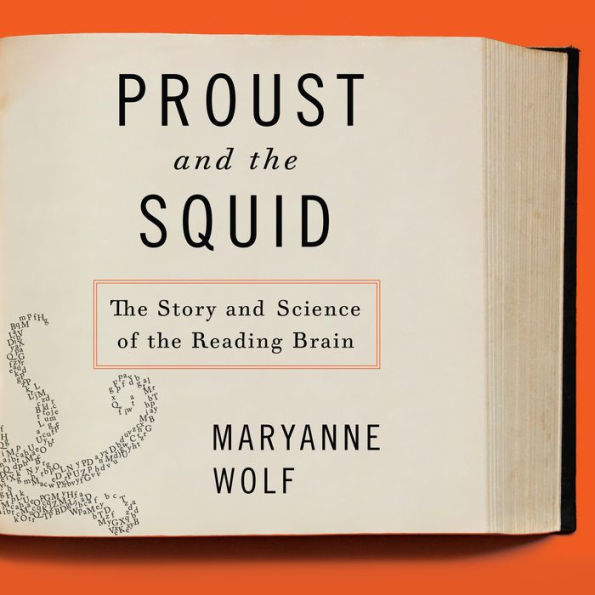As booksellers, we don't need to be convinced of the importance of reading, but Maryanne Wolf's sage book goes far beyond what even we imagined. Wolf, a Tufts University professor of child development, is not content to discuss the cultural significance of reading; she asserts with convincing evidence that this activity has radically changed the very organization of the human brain. Using a multidisciplinary approach, she shows how research in neurology, psychology, sociology, and her own specialty has revealed the far-reaching cognitive and perceptual effects of perusing the written word.
Reading is a miracle, because the brain was never wired for written language. This eloquent, accessible look at reading explores how it has transformed our brains, our lives, and the world.
It took 2,000 years for written language to develop, and it takes 2,000 days for a child's brain to learn to read. During that time, the brain must literally rearrange itself in order to understand written symbols. What happens when a child has difficulty mastering these abilities?
Using down-to-earth examples and personal anecdotes, a preeminent researcher and literacy lover embarks on a lively journey through the reading brain. Drawing on her vast knowledge of neurology, sociology, psychology, philosophy, and child development, she shows how the brain that read Sumerian cuneiforms on clay tablets is different from the brain that reads images on a computer screen. Just as writing reduced our need for memory, technology is reducing the need for written language-a change sure to have profound consequences for our future.
Fascinating and revelatory for anyone interested in the science of the brain, for parents of young children learning to read, and for those who want to know more about dyslexia.
1008424792
It took 2,000 years for written language to develop, and it takes 2,000 days for a child's brain to learn to read. During that time, the brain must literally rearrange itself in order to understand written symbols. What happens when a child has difficulty mastering these abilities?
Using down-to-earth examples and personal anecdotes, a preeminent researcher and literacy lover embarks on a lively journey through the reading brain. Drawing on her vast knowledge of neurology, sociology, psychology, philosophy, and child development, she shows how the brain that read Sumerian cuneiforms on clay tablets is different from the brain that reads images on a computer screen. Just as writing reduced our need for memory, technology is reducing the need for written language-a change sure to have profound consequences for our future.
Fascinating and revelatory for anyone interested in the science of the brain, for parents of young children learning to read, and for those who want to know more about dyslexia.
Proust and the Squid: The Story and Science of the Reading Brain
Reading is a miracle, because the brain was never wired for written language. This eloquent, accessible look at reading explores how it has transformed our brains, our lives, and the world.
It took 2,000 years for written language to develop, and it takes 2,000 days for a child's brain to learn to read. During that time, the brain must literally rearrange itself in order to understand written symbols. What happens when a child has difficulty mastering these abilities?
Using down-to-earth examples and personal anecdotes, a preeminent researcher and literacy lover embarks on a lively journey through the reading brain. Drawing on her vast knowledge of neurology, sociology, psychology, philosophy, and child development, she shows how the brain that read Sumerian cuneiforms on clay tablets is different from the brain that reads images on a computer screen. Just as writing reduced our need for memory, technology is reducing the need for written language-a change sure to have profound consequences for our future.
Fascinating and revelatory for anyone interested in the science of the brain, for parents of young children learning to read, and for those who want to know more about dyslexia.
It took 2,000 years for written language to develop, and it takes 2,000 days for a child's brain to learn to read. During that time, the brain must literally rearrange itself in order to understand written symbols. What happens when a child has difficulty mastering these abilities?
Using down-to-earth examples and personal anecdotes, a preeminent researcher and literacy lover embarks on a lively journey through the reading brain. Drawing on her vast knowledge of neurology, sociology, psychology, philosophy, and child development, she shows how the brain that read Sumerian cuneiforms on clay tablets is different from the brain that reads images on a computer screen. Just as writing reduced our need for memory, technology is reducing the need for written language-a change sure to have profound consequences for our future.
Fascinating and revelatory for anyone interested in the science of the brain, for parents of young children learning to read, and for those who want to know more about dyslexia.
23.07
In Stock
5
1

Proust and the Squid: The Story and Science of the Reading Brain

Proust and the Squid: The Story and Science of the Reading Brain
FREE
with a B&N Audiobooks Subscription
Or Pay
$23.07
23.07
In Stock

Editorial Reviews
Product Details
| BN ID: | 2940170099795 |
|---|---|
| Publisher: | HighBridge Company |
| Publication date: | 08/01/2008 |
| Edition description: | Unabridged |
Videos

From the B&N Reads Blog
